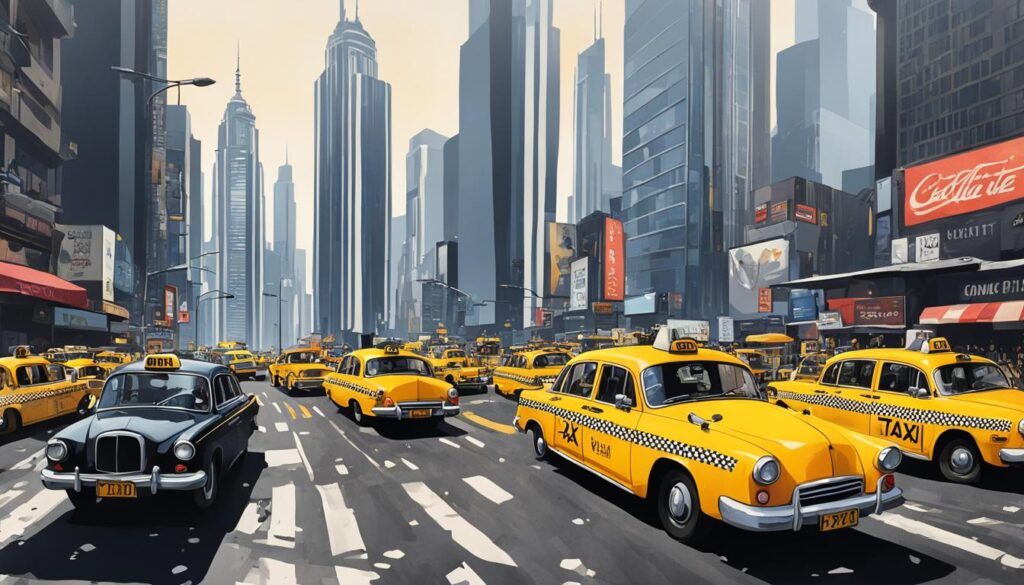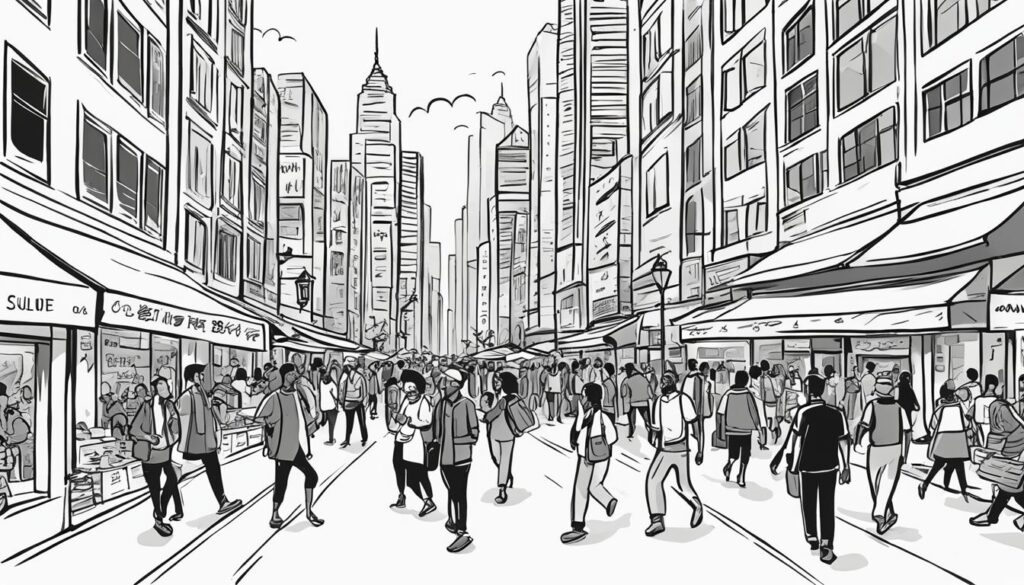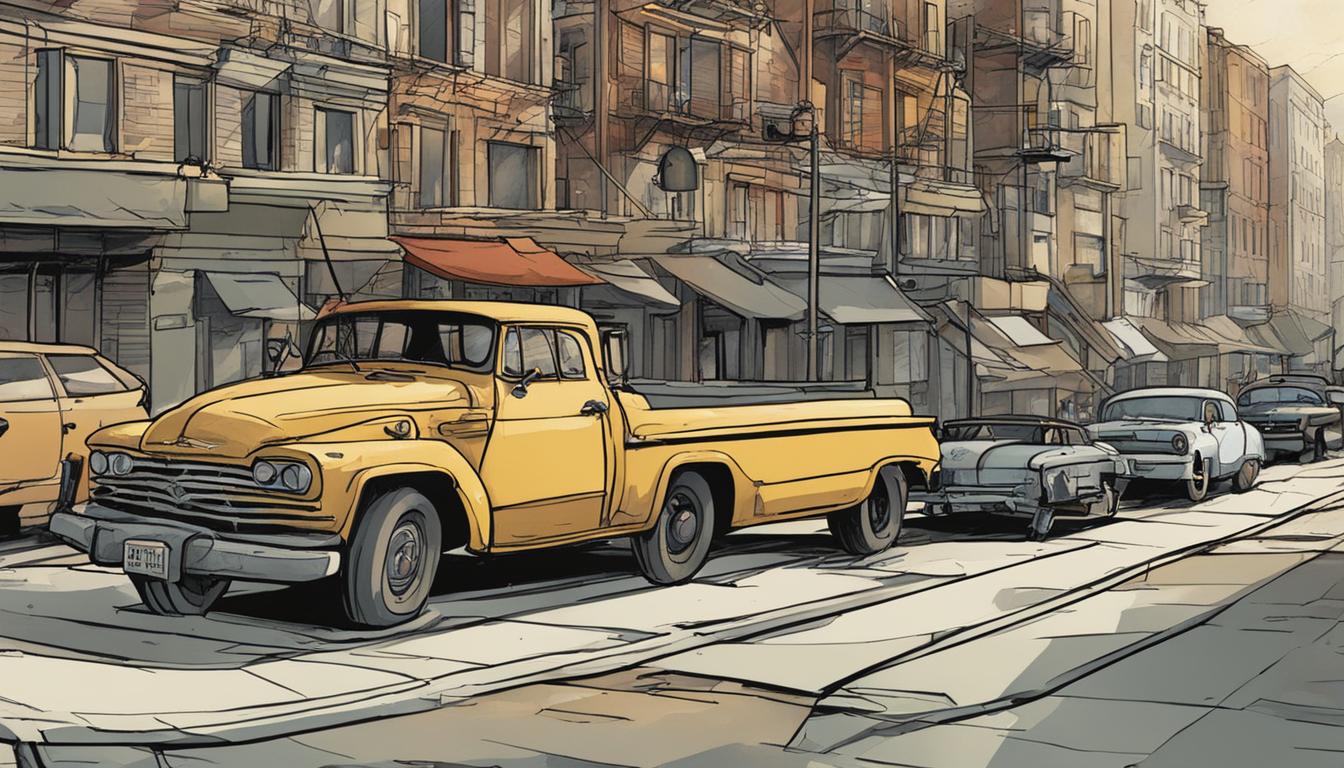James Howard Kunstler’s book, ‘The City In Mind: Notes on the Urban Condition,’ is a thought-provoking exploration of the complex nature of urban landscapes. In his book, Kunstler offers a compelling critique of our modern cities, examining issues such as urban sprawl, sustainability, and the impact of architecture on urban identity.
Through his perceptive observations and engaging writing style, Kunstler illuminates the challenges faced by modern cities and presents a compelling vision for creating more livable, vibrant, and sustainable urban environments.
If you are interested in urban design and the future of cities, ‘The City In Mind’ is a must-read book that offers valuable insights into these important topics.
Key Takeaways:
- ‘The City In Mind’ by James Howard Kunstler is a book that explores the complexities of urban landscapes.
- Kunstler offers a critique of modern cities and highlights the importance of sustainability, urban design, and public spaces.
- The book examines the historical context of urban development and considers the social and cultural dimensions of urban life.
- Kunstler provides predictions and recommendations for creating more livable, vibrant, and sustainable urban environments.
- ‘The City In Mind’ has made important contributions to the discourse on urban planning and design.
Overview of ‘The City In Mind’
In ‘The City In Mind: Notes on the Urban Condition,’ James Howard Kunstler offers a critical perspective on the state of urban landscapes and how they affect those who inhabit them. His book is a comprehensive examination of the urban condition that lays bare the challenges facing modern cities, such as urban sprawl, transportation, and the impact of technology on urban life. Kunstler’s book is an analysis of how urban architecture has influenced the culture and identity of cities throughout history, and how sustainable urban planning can shape the future of our communities.
Throughout the book, Kunstler provides compelling arguments for why urban design is of paramount importance, and how it can significantly impact the livability of our cities. He delves into the historical context of urban development, explores the social and cultural dimensions of urban life and highlights the role of public spaces in fostering community cohesion.
“Great cities cannot be designed, but they can be permitted to evolve.” – James Howard Kunstler
The Importance of Urban Design
According to Kunstler, urban design plays a critical role in shaping the functionality and livability of cities. ‘The City In Mind’ highlights how design decisions impact the way people interact with their environment and how communities form. Kunstler contends that poor design choices have led to urban environments that prioritize cars over people, alienating residents and disrupting urban communities.
He argues that a focus on walkability, accessibility, and green space can create more vibrant communities where people feel connected to one another and their city. The book provides compelling examples of successful urban design from around the world, showcasing how innovative thinking can transform a city from a lackluster metropolis to a thriving urban center.
“Good city form is not just a matter of the arrangement of buildings but of a three-dimensional spatial organization, ordered by the coordination between buildings, streets, and public spaces, and including their arrangement in relation to the natural landscape.”
Historical Context of Urban Development
In ‘The City In Mind,’ James Howard Kunstler provides a detailed exploration of the historical context of urban development. The book delves into the evolution of cities and the various factors that have shaped them throughout history. Kunstler traces the roots of urban development back to ancient times, examining the earliest human settlements and the growth of urban centers in ancient Egypt, Mesopotamia, and Greece.
The book highlights the impact of economic, political, and social changes on urban development over the centuries. Kunstler examines the growth of medieval cities and the rise of industrialization in the 18th and 19th centuries, which led to rapid urbanization and the development of new urban landscapes.
Kunstler’s examination of historical urban development provides important insights into the challenges and opportunities facing modern cities. By understanding the factors that have shaped cities in the past, policymakers and urban planners can make informed decisions about the future of urban landscapes.
Challenges Faced by Modern Cities
In his book ‘The City In Mind: Notes on the Urban Condition,’ Kunstler highlights the significant challenges faced by modern cities. One of the most pressing issues is urban sprawl, which refers to the unrestricted growth of cities and their surrounding areas. This often leads to the displacement of natural habitats and the loss of vital green spaces, exacerbating problems such as pollution and climate change.
Another major challenge for modern cities is transportation. With millions of people commuting to work and school every day, traffic congestion and inadequate public transport systems can have a significant impact on urban dwellers’ quality of life. Kunstler argues that current approaches to transportation planning often prioritize cars over pedestrians and cyclists, leading to dangerous and unsustainable road networks.
Finally, Kunstler identifies the impact of technology on urban life as a significant challenge for modern cities. While technology can improve many aspects of life, it also has the potential to exacerbate social isolation and inequality. The prevalence of online communication and screen time may reduce face-to-face interactions and lead to increased sedentary behavior.

“… urban sprawl, traffic congestion, inadequate public transport systems, and the impact of technology are some of the most significant challenges faced by modern cities.”
The Role of Public Spaces in Urban Life
James Howard Kunstler’s book, ‘The City In Mind,’ emphasizes the importance of public spaces in urban life. These communal areas, such as parks, plazas, and public squares, provide opportunities for social interaction and community cohesion. Public spaces also offer respite from the hustle and bustle of city life, promoting relaxation, meditation, and personal reflection.
Kunstler argues that public spaces contribute to the overall livability and functionality of urban environments. They provide a sense of place and identity, serving as cultural touchpoints that connect residents to their communities and histories. Additionally, public spaces offer opportunities for civic engagement and dialogue, giving residents a voice in the decision-making processes that shape their cities.
However, Kunstler warns that the role of public spaces in urban life is often overlooked or undervalued. Many cities prioritize private development over public amenities, leading to urban landscapes that lack green spaces, seating, and other essential features. As a result, urban dwellers may face greater isolation, stress, and overall dissatisfaction with their surroundings.
“Public spaces are the lungs of the city and the first expression of its identity.”
Sustainability and Urban Planning
The City In Mind explores the complex relationship between sustainability and urban planning. Kunstler astutely notes the impact of urbanization on our natural environment. He examines how seemingly small decisions, such as transportation and resource management, can have significant environmental impacts in the long term. The book analyzes the importance of sustainable development in cities and highlights potential solutions to pressing environmental challenges.
“Since urban areas consume the lion’s share of all resources, a workable sustainability must address urban life.” – James Howard Kunstler
The City In Mind advocates for the adoption of sustainable practices and development in urban landscapes. Kunstler argues that sustainable urban planning can not only ensure the preservation of the natural environment but enhance overall quality of life. This includes promoting the use of public transportation and encouraging energy-efficient buildings and public spaces. Through this exploration of sustainability and urban planning, Kunstler urges us to consider how we can design cities that benefit both people and the planet.
The Influence of Architecture on Urban Identity
Kunstler’s book, ‘The City In Mind,’ offers thought-provoking insights into the relationship between architecture and urban identity. The book examines how different architectural styles shape the character of cities and contribute to their unique identities. Kunstler also emphasizes the importance of preserving historical structures as a means of maintaining a city’s distinctive character and sense of place.
In exploring the impact of architecture on urban identity, ‘The City In Mind’ underscores the importance of thoughtful urban design. By carefully considering the aesthetic and functional aspects of architecture, cities can create environments that are both visually striking and well-suited to the needs of their residents. Ultimately, the book’s exploration of architecture and urban identity serves as a reminder of the critical role that design choices play in shaping the character and livability of our cities.
Social and Cultural Dimensions of Urban Life
In ‘The City In Mind: Notes on the Urban Condition,’ Kunstler’s insights into social and cultural dimensions of urban life provide a unique perspective on understanding urban landscapes. The book delves into a range of topics, including:
- Diversity: Kunstler highlights the importance of diverse communities in urban environments. He argues that thriving cities depend on embracing and celebrating cultural differences.
- Community Dynamics: ‘The City In Mind’ emphasizes the role of strong community dynamics in shaping urban life. Kunstler explores the importance of social cohesion and the ways in which community networks impact the livability of cities.
- The Arts: Kunstler’s book recognizes the significance of the arts in urban environments. He explores the use of public art, cultural institutions, and architecture in shaping the character of cities.

The social and cultural dimensions of urban life are a critical aspect of understanding and designing livable cities. Kunstler’s ‘The City In Mind’ provides a thought-provoking exploration of these themes, offering valuable insights into the complex interplay of culture, community, and urban design.
The Future of Cities
In ‘The City In Mind,’ James Howard Kunstler provides thought-provoking insights into the future of our cities. His book raises questions about the sustainability of current urban development models and explores alternatives for creating more livable and vibrant urban landscapes. Kunstler’s recommendations for urban planning prioritize pedestrians, public transport, and green spaces, with a focus on creating communities that foster social interaction and human connection.
As we look to the future, it is clear that cities will face a range of challenges in the coming years. Climate change, resource scarcity, and technological disruption are just a few of the issues that will shape the urban environment of the future. Kunstler’s work provides a valuable perspective on these challenges, and his ideas have had a significant impact on the discourse surrounding the future of cities.
“The greatest task before civilization at present is to make cities for human beings and take care of the environment meanwhile.” – Richard Rogers
Critique and Controversies
As with any book, ‘The City In Mind’ has received its fair share of critique and controversy. While some praise Kunstler’s insights into the complexities of urban landscapes, others are critical of his opinions and perspectives.
One point of critique is Kunstler’s tendency to focus on the negative aspects of cities, such as urban sprawl and environmental degradation, without offering enough solutions or positive examples of urban design. Some argue that he oversimplifies complex issues and fails to consider the diverse needs and experiences of urban residents.
Additionally, some critics view Kunstler’s position on architecture as too prescriptive and limiting. They argue that his emphasis on traditional, pre-modern architectural styles ignores the benefits of contemporary design and fails to acknowledge the realities of modern urban life.
Despite these critiques, ‘The City In Mind’ remains a significant contribution to the discourse on urban planning and design. Its insights into the social, cultural, and environmental dimensions of urban life provoke thoughtful analysis and encourage further debate within the community.
Impact and Influence of ‘The City In Mind’
James Howard Kunstler’s book ‘The City In Mind’ has had a significant impact on the field of urban planning and design. The book’s insightful exploration of the urban condition has influenced the discourse around urban landscapes and shaped the way many professionals approach their work.
One of the most notable contributions of ‘The City In Mind’ has been its emphasis on the importance of design in shaping livable and functional cities. The book’s emphasis on how urban design can impact the social and cultural dimensions of urban life has spurred discussions and initiatives around creating more sustainable, pedestrian-friendly urban spaces.
Moreover, Kunstler’s perspectives on the role of public spaces in fostering community interaction and the influence of architecture on urban identity have been influential in shaping urban planning practices. Professionals in the field have taken inspiration from his vision of creating cities that are welcoming, vibrant, and sustainable.
The book’s impact extends beyond just urban planning and design, as ‘The City In Mind’ has contributed to broader conversations around environmental sustainability, resource management, and social equity. Kunstler’s compelling insights into the challenges of modern cities and his vision for their future have inspired many to think critically and creatively about the future of urban landscapes.
Overall, ‘The City In Mind’ has been a seminal work in the field of urban planning and design, influencing the way many professionals approach their work and inspiring new discussions and initiatives around urban landscapes.
Conclusion
The City In Mind by James Howard Kunstler offers a thought-provoking exploration of the urban condition and the importance of urban design in shaping cities. Throughout the book, Kunstler provides insights into the historical context of urban development, the challenges faced by modern cities, and the role of public spaces in urban life. He also considers issues of sustainability, architecture, and the social and cultural dimensions of urban environments.
Kunstler’s predictions and recommendations for creating more sustainable, vibrant, and livable urban landscapes offer valuable insights for urban planners, architects, and policymakers. ‘The City In Mind’ has also contributed to the discourse on urban landscapes and has influenced discussions on urban design and planning.
Overall, ‘The City In Mind’ is a valuable resource for anyone interested in understanding the urban condition and the ways in which we can shape urban environments for the better.
FAQ
What is ‘The City In Mind’ by James Howard Kunstler about?
‘The City In Mind’ is a book by James Howard Kunstler that explores the urban condition and provides observations and insights into urban landscapes.
What is the main theme of ‘The City In Mind’?
The main theme of ‘The City In Mind’ is the importance of urban design in shaping cities and its impact on the livability and functionality of urban environments.
What does ‘The City In Mind’ discuss regarding historical context?
‘The City In Mind’ examines the historical context of urban development and explores the factors that have shaped cities throughout history.
What are the challenges faced by modern cities as discussed in ‘The City In Mind’?
‘The City In Mind’ highlights challenges such as urban sprawl, transportation issues, and the impact of technology on urban life.
How does ‘The City In Mind’ address the role of public spaces?
‘The City In Mind’ emphasizes the importance of public spaces, such as parks and plazas, in fostering social interaction and community cohesion within urban environments.
Does ‘The City In Mind’ discuss sustainability and urban planning?
Yes, ‘The City In Mind’ explores sustainability and its relationship to urban planning, addressing issues of environmental impact, resource management, and sustainable development in cities.
What does ‘The City In Mind’ say about the influence of architecture on urban identity?
‘The City In Mind’ considers the influence of architectural styles on the character of cities and emphasizes the preservation of historical structures as important for urban identity.
How does ‘The City In Mind’ explore the social and cultural dimensions of urban life?
‘The City In Mind’ provides insights into the social and cultural dimensions of urban life, discussing topics such as diversity, community dynamics, and the arts within urban environments.
What are James Howard Kunstler’s perspectives on the future of cities?
In ‘The City In Mind,’ Kunstler offers predictions and recommendations for creating more sustainable, vibrant, and livable urban landscapes.
Are there any critiques or controversies surrounding ‘The City In Mind’?
Yes, there have been debates and differing perspectives within the urban planning and design community regarding Kunstler’s ideas presented in ‘The City In Mind.’
What impact has ‘The City In Mind’ had in the field of urban planning and design?
‘The City In Mind’ has made notable contributions to the discourse on urban landscapes and has influenced thinking and practices in the field of urban planning and design.
What are the key takeaways from ‘The City In Mind’?
Key takeaways from ‘The City In Mind’ include the significance of urban design, the historical context of urban development, the challenges faced by modern cities, the role of public spaces, and the importance of sustainability in urban planning.



